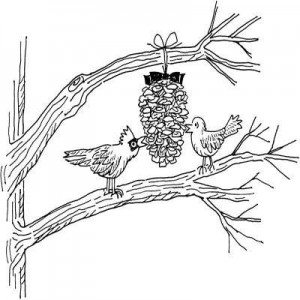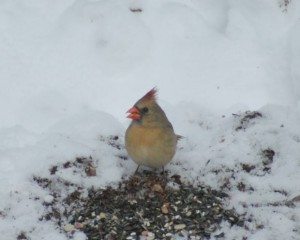If you are like me, you love having birds, squirrels and all kinds of living creatures in the front/back yard enjoying sunflower seeds, nuts, or other feed left out for them to enjoy! I think for many people, only when spring rolls around, do they think of gettingthe bird feeder out..However, winter is the most crucial time to think about feeding the birds. There are some birds that have decided to spend their time hanging around and on the lookout for something to eat. Insects are hard to find in freezing weather. I have decided recently to provide a reliable food source for local birds in my back yard, so I can still enjoy the wonderful opportunity to observe birds even during the winterand to make sure that they are getting the fuel/energy they need to battle the cold and freezing temperatures.
Many people overlook the importance of winter bird feeding. A birds survival can be a struggle, but winter can prove to be harsh, increasing their vulnerability. Their metabolism is fragile to the winter environment. Sufficient food is vital but hard er for them to source on their own- but is it entirely up to them to survive each winter.
If you do not have a feeder..that’s Ok…I wanted to share with you how to create a simple feeder that will do the trick! All you will need to make your own is a pine cone and a few simple supplies around the house. In fact, all you will need is a pine cone, a piece of string, some peanut butter, a table knife or spatula, a shallow dish and some birdseed. Use the table knife or spatula to spread peanut butter on the pine cone. The peanut butter helps the birdseed stick and also may attract some other interesting wildlife, like squirrels. Since I do not have peanut butter- almond butter will have to do.
Once your pinecone is covered in peanut butter, pour some birdseed in the shallow dish. Then roll your pine cone in the seed. Make sure your cone is loaded with plenty of seeds. Try hanging it from a tree branch where birds normally hang out to make it easy for the birds to find. To hang your bird feeder, tie one end of the string to the top of your pine cone. Then tie the other to the tree branch where you want the feeder to hang. Be sure to refresh your feeder with more birdseed and peanut butter every few days or as needed to keep your feathered friends coming back for more. Feeders should be located out of the wind and should be positioned near cover but in the open to allow birds to watch for danger. If you choose ground feeding, make sure to feed in an area near cover with a clear view of the surroundings is desirable.
Here is a selection of seeds that attract a wide variety of birds:
Black oil sunflower seeds– It attracts cardinals, woodpeckers, blue jays, goldfinches, purple finches, chickadees, titmice, and nuthatches. When choosing sunflower seeds-CHOOSE the black sunflower seeds-higher in oil content, softer shelled, and cheaper.
Niger– a favorite choice for Goldfinches.
Safflower seeds- a white seed, slightly smaller than black sunflower seed interests chickadees, titmice and downy woodpeckers. Did you know squirrels don’t safflower seeds. Neither do grackles, blue jays, or starlings. Couls be because they are so bitter!
White millet is the least expensive bird seed you can buy and the easiest to find. You can even just scatter it on the ground for sparrows, juncos, and mourning doves.
Suet-solid fat rendered from beef and venison. It provides concentrated energy to help birds make it through freezing winter days/nights.
I am no expert on birds but one thing I found out recently is that it is best not to buy bags of mixed birdseed. They contain a lot of filler, such as red millet that most birds won’t eat it. It gets kicked onto the ground, where it stays until it rots. Mixed birdseed is not a bargain. Buy the seeds you know your birds want…a much more sustainable option!
If you are new to feeding birds- be patient…it takes time for birds to figure out you are the place to go. But once they discover it, you will never have a lack of company!
The days are really cold now…burrrrrrrr! Feeding birds can be especially important when temperatures fall below zero degrees Fahrenheit (minus 18 degrees Celsius). Easy meals can mean the difference between life and death. In very cold weather, birds survive by remaining very still, perching quietly with their feathers fluffed out for insulation. They do this to save energy, which can only happen if they have enough body fat to fuel them. Consequently, birds that have access to feeders have an easier time retaining fat.
No matter what the season, feeding birds is important, and feeders should be kept full year round……so speaking of feeding time….time to get the almond butter out! Missing the chirps, chatter, and fluttering of feathers!
 Montreal Dog Blog Montreal's Online Dog Park
Montreal Dog Blog Montreal's Online Dog Park





